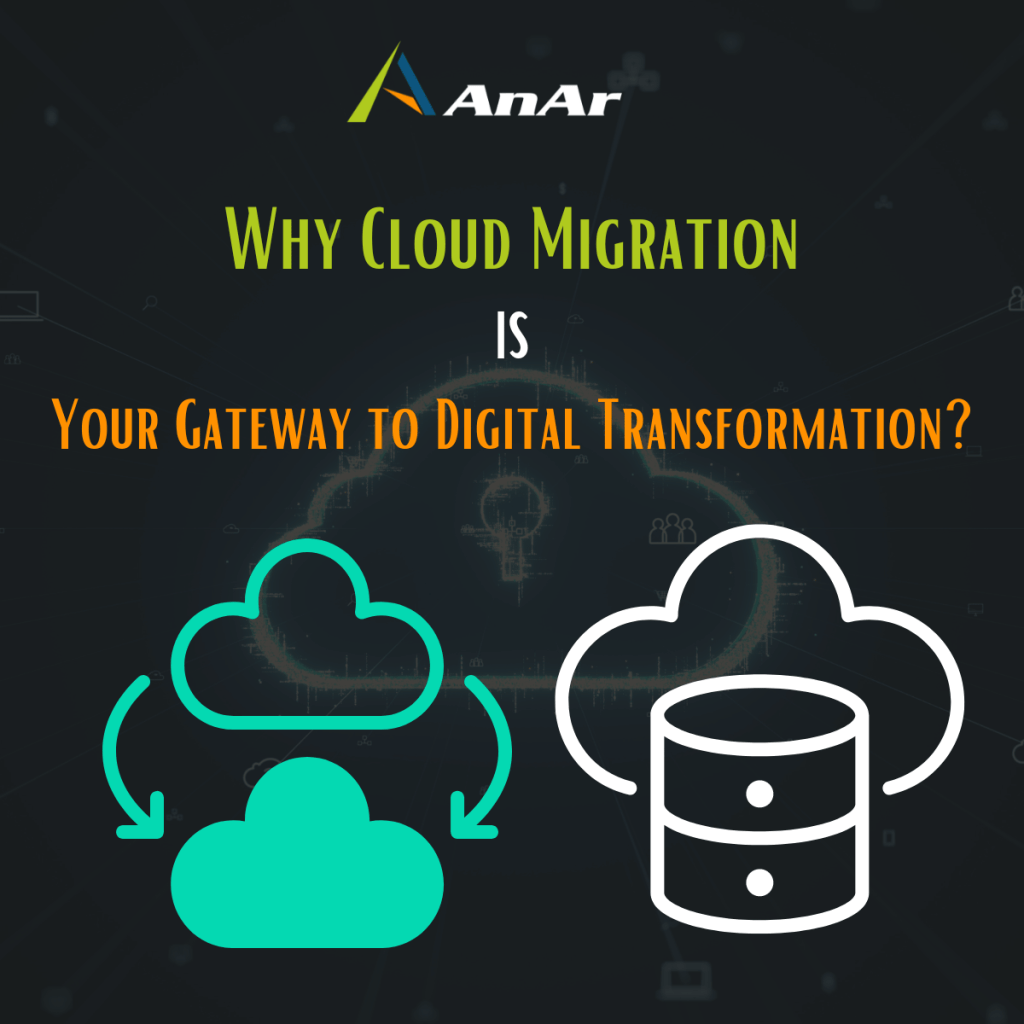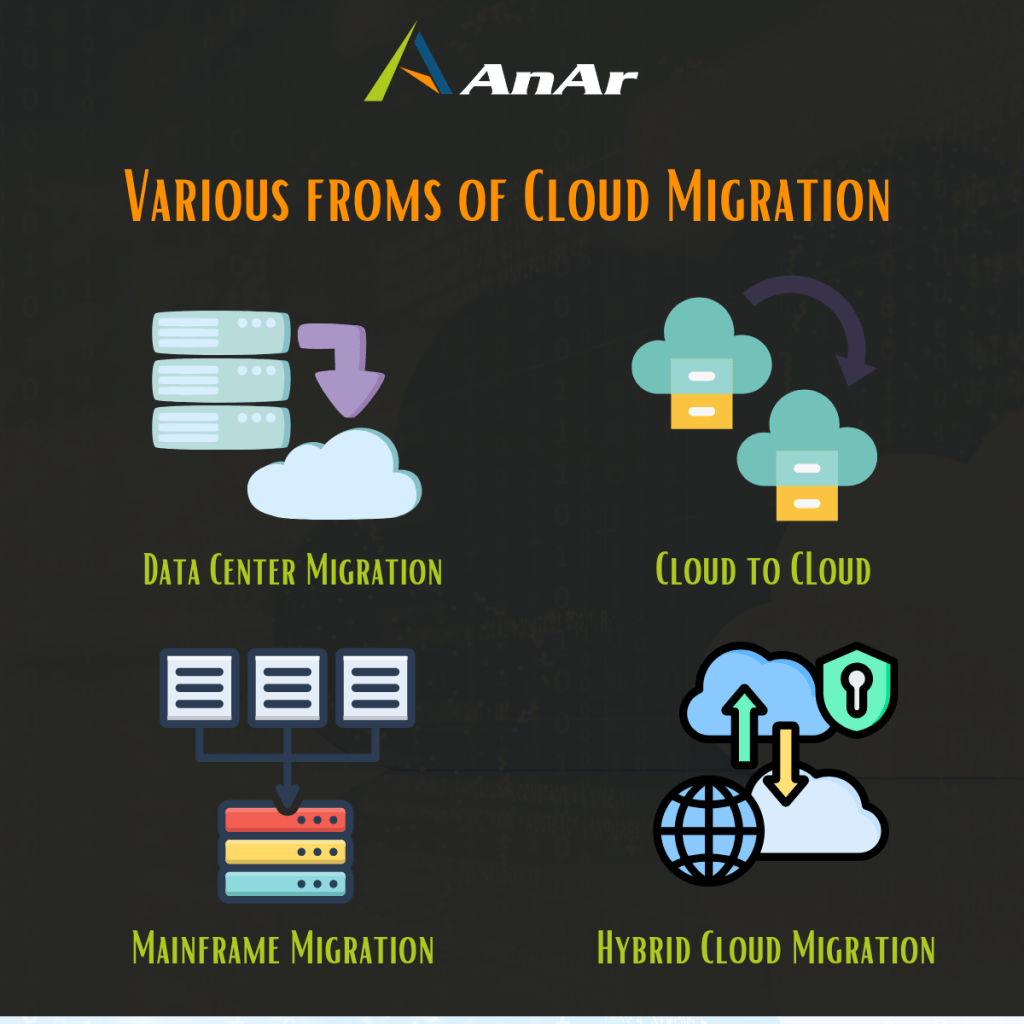Is your business ready for the future? In today’s fast-paced digital world, standing still is not an option. Companies that thrive are those that embrace change and leverage innovation as a core strategy. For many, cloud migration has become the cornerstone of this transformation—a strategy that’s reshaping how businesses operate and compete.
But what does cloud migration truly entail, and why is it a game-changer for organizations looking to stay ahead?
By understanding the fundamentals of cloud migration and the step-by-step process behind it, you can position your business for a seamless transition and long-term success.
This blog delves into the transformative power of cloud migration, showing how it’s more than just moving data—it’s about reimagining your business’s technological foundation. Whether you’re a small business optimizing operations or a large enterprise redefining your IT strategy, this guide will provide the insights you need to navigate the journey to the cloud with confidence.
What is cloud migration?
The process of transferring data, applications, or other business components from an organization’s in-house infrastructure to a cloud computing environment is known as cloud migration. This process allows businesses to take advantage of the many benefits cloud computing offers, such as increased scalability, reduced costs, and improved disaster recovery capabilities. By adopting the on-demand, self-service model of the cloud, businesses can achieve end-to-end digital transformation and outmaneuver uncertainty.
Why is cloud migration being rapidly adopted?
As businesses strive to enhance their infrastructure and performance in an ever-evolving technological landscape, many are turning to cloud computing as a transformative solution. The shift is driven by the growing inefficiency of legacy systems—aging servers, outdated software, and unreliable firewall appliances—that struggle to meet today’s demands. However, migrating to the cloud is far from a plug-and-play solution. It’s a complex endeavor that requires meticulous planning, analysis, and execution to align the cloud environment with the unique needs of the business.
Successful cloud migration involves more than just moving data. Companies must also prepare for what comes after the transition, particularly when it comes to optimizing applications for the cloud. This process, known as application modernization, ensures that business-critical systems can leverage the full potential of the cloud, delivering enhanced performance, scalability, and efficiency.
What are the various forms of cloud migration?
When moving resources, such as data and applications, from one place to another, the type of resource and the destination location are crucial considerations in the process. These are known as the “workload” and the “migration destination,” respectively, and play a significant role in determining the success of the migration.
This section will explore various migration scenarios and give a general overview of the procedures, recommended practices, and business-related factors involved in them.
Datacenter migration
Datacenter migration involves relocating data from in-house servers and mainframes, typically located in a company’s office, to servers run by a cloud provider. These cloud-based servers are usually found in large, secure, and professionally maintained facilities. The most common method of moving data center resources to the cloud is through high-capacity networks, but if a strong network is not available, resources can be transferred by dragging them onto high-capacity disks or “data boxes” and physically shipping them to the cloud provider for uploading to their servers.
Hybrid cloud migration
Another common migration scenario is hybrid cloud migration, where organizations opt to keep some of their resources on their on-premises servers and move only a required portion of them to the cloud, creating a “hybrid cloud” environment. This approach allows organizations to make the most of their existing on-premises data center equipment while also meeting industry and government compliance requirements. Additionally, hybrid clouds can also be used for cloud-to-cloud backup, which serves as a disaster recovery solution in case the on-premises data center becomes unavailable.
Cloud-to-cloud migration
Cloud-to-cloud migration is a process in which an organization moves its resources, such as data and applications, from one public cloud to another. This type of migration is becoming increasingly popular as organizations adopt multiple cloud environments, often as a result of mergers and acquisitions. By moving resources between different public clouds, organizations can take advantage of various cloud platforms’ products, services, and pricing and optimize their IT infrastructure for cost and performance. Additionally, a central management tool can be used to manage and monitor resources across multiple clouds from a single location, simplifying the management process. This type of migration is also helpful for organizations that want to implement a disaster recovery solution by having a backup of their data and applications in different clouds.
Application, database, and mainframe migration
Migrating applications, databases, and mainframes has become a standard practice for organizations seeking to modernize their IT environments. From workloads like Linux, SAP, SQL Server, and Windows Server to mainframes such as IBM and Unisys systems, transitioning to the cloud offers a host of advantages. These include reduced costs, enhanced performance and reliability, access to cutting-edge cloud-based developer tools and APIs, stronger security, and the flexibility to scale resources on demand without investing in additional hardware.
While some companies opt for a straightforward “lift and shift” approach—moving workloads to the cloud with minimal changes—others choose to refactor their systems. Refactoring involves updating applications to take full advantage of the cloud’s capabilities, resulting in improved efficiency, resilience, and scalability in the new environment.
What is the process for cloud migration?
Moving a company’s operations to the cloud is a significant undertaking that requires careful consideration and planning. The process of migrating to the cloud can have a profound impact on a business and its operations, making it essential to have a clear understanding of the steps involved. A comprehensive end-to-end view of the migration journey is necessary to ensure that the necessary capabilities and activities are in place to execute the migration successfully.
The process of cloud migration can be broken down into three main steps: Defining your strategy and building your business case, discovery and assessment, and Cloud migration.
Defining your strategy and building your business case
The initial step in the process of cloud migration is to establish a clear strategy and build a comprehensive business case. This step involves identifying the specific business objectives that the company hopes to achieve by moving to the cloud. It is important to remember that migrating to the cloud is not just a technical exercise, but the desired business outcomes should drive it. Once the objectives are identified, the company can start developing a cloud migration strategy and the business case for the move.
A vital aspect of this strategy is determining which applications will be migrated to the cloud and which type of cloud environment they will be moved to. Also, it is important to have a clear understanding of the infrastructure that will be required to support the migration and how it will look like once the migration is completed. This will help determine the specific steps required to prepare for the migration.
Discovery and assessment
Cloud migration
The final step in the process of cloud migration is the actual migration of the business’s IT infrastructure, applications, and data to the cloud. This step is where the majority of the work takes place and typically involves modernizing existing applications for the cloud, developing new cloud-native applications, and transforming the architecture and infrastructure of the business’s IT systems. This step aims to establish a new technology operating system and work culture that allows the company to advance more rapidly, productively, and efficiently.
Automated management and migration tools are essential for executing a smooth migration. These tools not only speed up the migration process but also ensure that it is done with high quality, consistency, and repeatability. When used in combination with specialized skills and solution accelerators, they can form a “cloud migration factory” that can further accelerate the migration process.
It is also essential to have a robust cloud journey management plan in place to keep the migration effort on track. This plan will help ensure that the migration is completed on time and within budget and that the business’s IT systems are fully operational and meeting the required service level agreements after the migration is complete.



Cloud Migration: The Benefits & Challenges
For organizations that embark on the journey of migrating their operations to the cloud, the transition can result in a significant impact on the business.
The cloud computing model provides a range of benefits, some of which are outlined below:
-
- Increased Scalability: One of the primary benefits of cloud computing is the ability to scale computing resources up or down as needed without significant capital expenditures. This is especially important for companies experiencing rapid growth, as they can quickly accommodate new employees, customers, and data without having to purchase additional hardware.
- Improved Flexibility: With the cloud, companies can access computing resources from anywhere, at any time. This allows them to be more responsive to changing business needs and provides greater flexibility in terms of where and when work is performed.
- Enhanced Security: Cloud service providers invest heavily in security measures to ensure the protection of customer data. By leveraging these investments, companies can benefit from enhanced security without having to make significant investments in their own security infrastructure.
- Lower Costs: With cloud computing, companies only pay for what they use rather than having to make significant upfront investments in hardware and software. This can result in lower overall costs and increased profitability.
- Increased Collaboration: Cloud-based collaboration tools, such as online document storage and shared workspaces, allow teams to work together more effectively and efficiently, regardless of location.
- Compliance: In industries that are highly regulated, such as finance, healthcare, and government, ensuring compliance with industry-specific regulations is of utmost importance. To cater to these needs, some cloud service providers offer specialized solutions designed to meet the compliance requirements of these industries.
- Backup, Failover, and Recovery: One of the critical advantages of using cloud computing is the built-in backup, recovery, and failover capabilities offered by most cloud service providers. These features are designed to ensure the availability and accessibility of critical data and systems, even in situations of a disaster or outage. One of the key benefits of these solutions is that they typically offer one-click backup and recovery capabilities, making it easy for organizations to quickly recover lost or damaged data.
- Simplified Monitoring and Management: Another advantage of cloud computing is the simplified management and monitoring that it offers. Many cloud service providers provide centralized management tools that allow organizations to manage and monitor their data centers and cloud resources from a single interface. This centralized management tool offers a comprehensive view of all cloud resources, making it easy for organizations to track resource utilization, monitor system performance, and manage security and compliance policies.
While cloud migration offers many benefits, the process of migrating to the cloud can also present a number of challenges.
Some of the most common migration challenges include:
-
- Complexity: Migrating your existing systems to the cloud can be a complex process involving multiple stages and a variety of different tools and technologies. This complexity can make it difficult for organizations to accurately assess the time and resources required to complete the migration.
- Data security and privacy: Migrating sensitive data to the cloud can raise concerns about data security and privacy. Organizations need to ensure that their data is protected against unauthorized access and that the cloud provider has robust security measures in place.
- Integration with existing systems: Integrating cloud-based systems with existing systems can be a complex and time-consuming process. Organizations need to ensure that their existing systems are compatible with the cloud and that data can be easily moved between the two.
- Downtime: Migrating to the cloud can result in temporary downtime for critical systems and applications. This downtime can impact business operations and can be difficult to predict and manage.
- Cost: The cost of migrating to the cloud can be high, including the cost of cloud services, hardware upgrades, and consulting fees. Organizations need to accurately assess the costs involved and ensure that they have the budget to complete the migration.
Final Wrap-up
Cloud migration isn’t just about upgrading technology—it’s about transforming your business for the digital future. As we’ve discussed, moving to the cloud offers unparalleled advantages, including improved scalability, flexibility, security, and cost-efficiency. These benefits empower businesses to thrive in today’s dynamic markets while preparing for tomorrow’s challenges.
Embarking on this journey requires more than just ambition. It demands a clear strategy, meticulous planning, and alignment with your overarching business objectives. Whether it’s optimizing existing applications or building cloud-native solutions from the ground up, each decision in the migration process shapes the foundation of your future operations.
At AnAr Solutions, we specialize in helping businesses navigate this transformation with confidence. From straightforward lift-and-shift migrations to advanced modernization projects, our team ensures your cloud migration journey is seamless and aligned with your goals. Let us help you unlock the full potential of the cloud and drive your business forward.
Ready to start your cloud migration journey?
Contact us today to schedule a consultation with our cloud specialists.
Together, we can unlock new opportunities and propel your business towards a future rich with innovation and growth.







